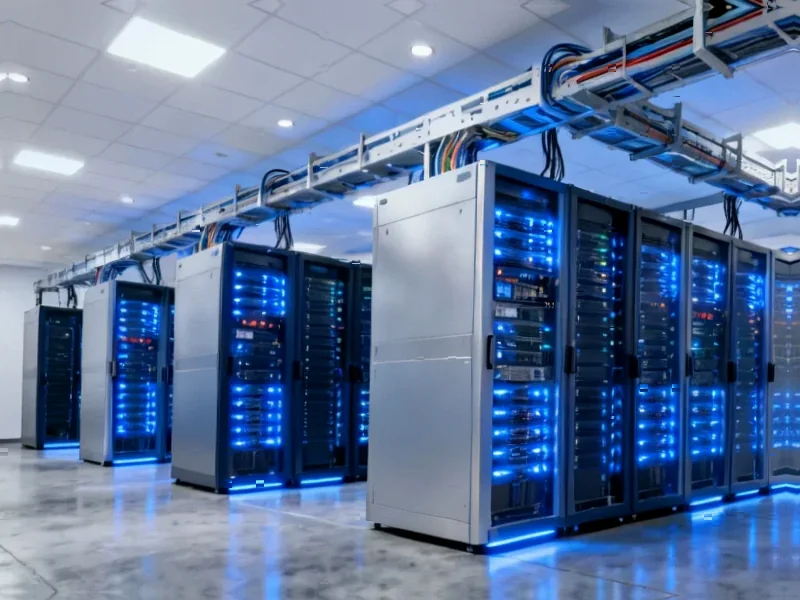According to Neowin, Microsoft will invest $7.9 billion in UAE AI and cloud infrastructure between 2026 and 2029, with $5.5 billion allocated to capital expenses for AI infrastructure and nearly $2.4 billion for local operating expenses and cost of goods sold. This follows Microsoft’s earlier $1.5 billion equity investment in G42, the UAE’s sovereign AI company, and over $4.6 billion already invested in AI and cloud datacenters in the region. The company has secured US government export licenses to ship the equivalent of 21,500 Nvidia A100 GPUs and an additional 60,400 A100-equivalent chips using advanced Nvidia GB300 GPUs. Microsoft will use this infrastructure to provide government, startups, enterprises, and developers across the Middle East, Central Asia, and Africa with access to advanced AI models from OpenAI, Anthropic, open-source providers, and Microsoft. This massive commitment represents a strategic deepening of Microsoft’s presence in a critical emerging AI market.
The Technical Architecture Behind the Investment
The scale of GPU deployment Microsoft is planning represents one of the largest AI infrastructure projects outside the United States. The equivalent of 82,000 A100 GPUs—comprising A100, H100, H200, and the next-generation GB300 architectures—creates computational capacity that exceeds many national research facilities. What’s particularly significant is the mixed architecture approach: A100s provide established inference capabilities, H100/H200 clusters deliver cutting-edge training performance, while GB300 deployments represent forward-looking infrastructure for next-generation models. This tiered approach allows Microsoft to offer differentiated service levels to government clients requiring sovereign AI capabilities versus commercial enterprises needing cost-effective inference services. The thermal management and power infrastructure required to support this density in the UAE’s climate represents a substantial engineering challenge that Microsoft’s global datacenter experience will be crucial to overcome.
Sovereign AI and Geopolitical Positioning
The partnership with G42 as the UAE’s sovereign AI company creates a fascinating geopolitical dynamic. Sovereign AI refers to nations developing AI capabilities within their own jurisdictional control, rather than relying entirely on foreign cloud providers. Microsoft’s approach appears to be creating a hybrid model where infrastructure is locally deployed but remains within Microsoft’s operational framework. This satisfies both the UAE’s strategic interests in maintaining control over critical AI infrastructure while leveraging Microsoft’s global scale and security capabilities. The US government export licenses for advanced GPUs to the UAE represent a significant policy decision, essentially designating the UAE as a trusted partner in sensitive technology transfer. This creates a counterbalance to Chinese AI influence in the region while establishing the UAE as a Western-aligned AI hub for the Middle East, Central Asia, and Africa.
Market Transformation Across Multiple Regions
The investment’s impact extends far beyond the UAE’s borders, targeting what Microsoft identifies as the “Middle East, Central Asia and Africa” market—a strategically defined region spanning multiple economic development stages. For oil-rich Gulf states, this provides the AI infrastructure needed to diversify beyond hydrocarbon economies. For developing African nations, it offers cloud-scale AI capabilities without requiring massive local infrastructure investments. The technical implementation will likely involve Azure AI services customized for regional requirements, including multilingual model support for Arabic dialects and other local languages. The computational scale also suggests Microsoft is preparing for regional governments to train their own large language models rather than just using imported ones, creating opportunities for culturally and linguistically specific AI applications that global models don’t adequately serve.
Technical and Operational Implementation Challenges
Deploying this scale of AI infrastructure in the UAE presents unique technical challenges beyond the obvious power and cooling requirements. The region’s environmental conditions demand advanced cooling systems that can maintain optimal operating temperatures for high-density GPU clusters despite extreme external heat. Microsoft will need to implement sophisticated water recycling systems given the UAE’s water scarcity issues. From a connectivity perspective, the infrastructure must integrate with both the UAE’s advanced fiber networks and provide reliable connectivity to less developed neighboring regions. The operational model will likely involve close collaboration with local partners for day-to-day management while maintaining Microsoft’s global security and compliance standards. The phased implementation from 2026-2029 suggests a carefully staged approach that allows for technology refreshes as newer GPU architectures become available, ensuring the infrastructure remains competitive throughout the investment period.
Shifting Global AI Infrastructure Competition
This investment significantly alters the competitive landscape for cloud AI infrastructure globally. While Nvidia remains the dominant GPU provider, Microsoft’s massive deployment in the UAE creates a beachhead that other hyperscalers will need to match. Amazon Web Services and Google Cloud have substantial Middle East presence but nothing at this scale specifically targeting AI workloads. The timing is particularly strategic as nations worldwide are formulating their AI strategies and infrastructure requirements. By establishing this footprint early, Microsoft positions itself as the default AI infrastructure provider for governments and enterprises across a vast region. The investment also demonstrates that the era of concentrated AI development in Silicon Valley and China is giving way to a more distributed global model, with strategic hubs emerging in geopolitically significant locations with the capital and ambition to become AI leaders.




